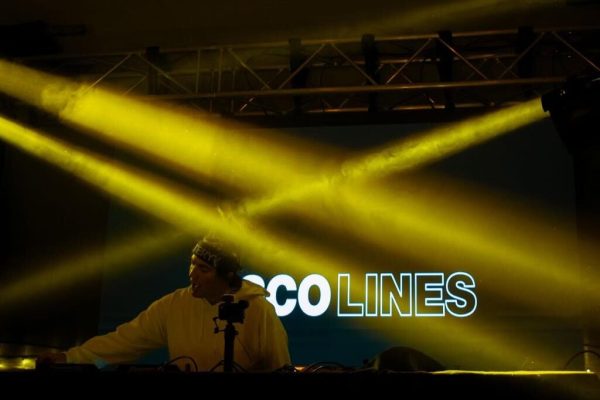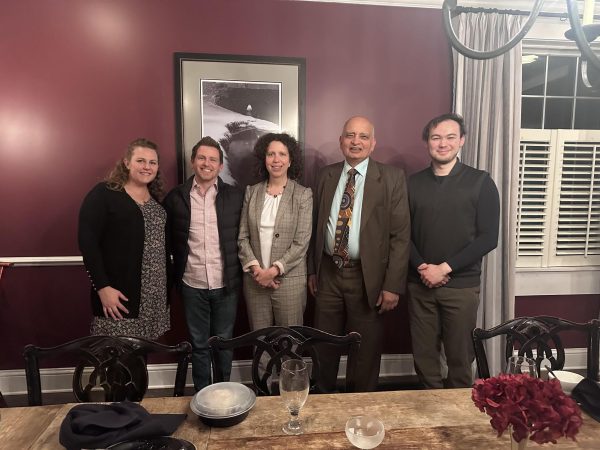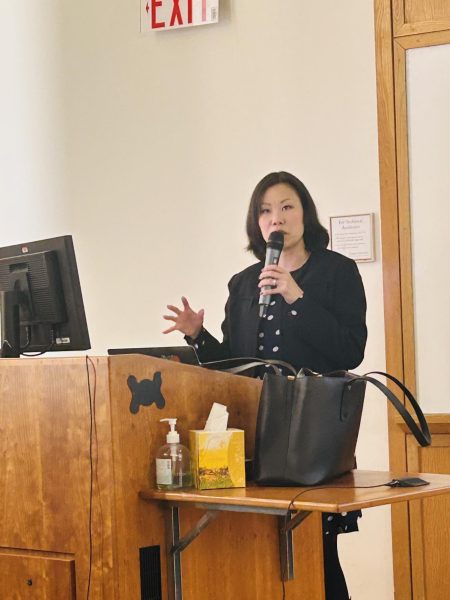Burn Baby Burn:
After leaving Student Theatre’s 24-Hour Burn last Saturday, I felt a little more bohemian, a little less mainstream and a lot more creative. Held in Ryan 212, the concept of Burn was originally created in New York City by the One Arm Red theatre troupe. The members of One Arm Red wanted to test the creativity of writers, directors and actors by writing, producing and staging a play within a 24-Hour time period. This production required writers and directors to stay up for 12 hours throughout the night formulating plays that were rehearsed and performed by actors in the final 12 hours of the day.
The idea for 24-Hour Burn was brought to Colgate by senior Adam Samtur, who learned about One Arm Red while on a New York extended study trip with former professor of theatre Sarah Bay-Cheng. Though the Burn was attempted at Colgate last year, this production was a bit different.
“This year we had a chance to read writing samples from many writers before assembling the seven that participated in the show,” says Samtur. “We also had a sound designer this year and gave our writers a three-word constraint to guide our production to a common theme (expendability, distance and expectations). Last year we sort of said, ‘Here are your computers … now go.’ ” Under the direction of Samtur, who is general manager of Student Theatre, students of all years came together to create four plays in, literally, one day.
There was something about the actors, the set and the writing of this production that confidently screamed, “This is raw theatre!” As I walked into the blackbox, I was handed a single sheet of printer paper and told to sit down “Wherever you can find a seat, or even on the floor.”
A little perturbed by the suggestion that I sit on the floor, I glanced down at the sheet of paper, only to be met by indecipherable text and not the kind that is written in chicken scratch, but rather the kind that is somehow copied too darkly and too lightly so the whole page is unreadable. Frustrated, I looked over at my friend and whispered something to the effect of, “If they can’t get the playbill right, the show will definitely be interesting to see.” And I was right.
The room itself certainly gave evidence to the common theatre phrase, “All you need for a play is two planks, an actor and a passion.” Burn’s performance in Ryan 212, with its draped walls, wood floors and minimal lighting, was a production space that might seem foreign to many theatre-goers. There was no definable stage and the seats in the room were not set up on an incline, making it a little difficult for the audience to see the action. I took a chance and plopped myself onto the floor where no crazy hairdo could obstruct my view.
The lights went up on the short play, Free to Move about the Cabin, written by seniors Lauren Kerensky and Caren King. This fast-paced comedy about the awkward, and sometimes eccentric, people one meets on a plane was both honest and extremely entertaining. Kerensky says the idea stemmed from experiences she has had with strangers in transit.
“I thought, when people are trapped in a confined space like that, a lot of things about peoples’ personalities are exposed,” she said. “And it could totally be possible that the strangers you meet are fabricating some wild story of their own just to amuse themselves, and you would never be the wiser.” Since the audience knew the true identities of the characters, however, we couldn’t help but be thoroughly shocked and entertained by the fictitious life stories told to other passengers.
The next play, Dinge, written by sophomores Allsion Ewing and Kevin Bauch, acted as an expos?e on the sad inner lives of the regular people one meets at a bus stop in the city. Its characters were far ranging and fresh, including a blind and jobless woman, a heartless boyfriend and a psychotic British CEO. Interestingly, however, as each scene came to an end, a runner sped across the stage for no apparent reason.
When asked about the meaning, if any, behind this action, Samtur said, “We told our writers we were going for a ‘running them’ and they took it as a ‘running man.'”
“O….K…”, I thought, adding “random runner” to my already running list of “problems” with the show, which included “non-inclined seats” and “an indecipherable playbill.”
After Dinge, the lights went up on Tango and Toilet Paper, a two-person play filled with love and sadness. First-year Ally Dall truly captured her role as a nostalgic girl forced to survive on only memories of her deceased boyfriend. The play heightened with the character’s explanation of the sense of “freedom, confidence, safety and security” that she could only feel around her man. Suddenly, the audience found out that this confidence was shattered the day her boyfriend committed suicide. When Dahl described that day, the lingering smiles of the audience quickly turned into frowns and their once excited faces became blank. It was the most dramatic of the plays and arguably one of the tightest in the production.
24-Hour Burn ended on a funny note, with juniors Nick Coast and Connoly Butterfield’s Luke 5:32. The play centered around five bizarre Catholics and their confessions to a priest. Its characters cried about over-masturbation, coveting the neighbor’s wife, and the outrageousness of Biblical stories. Though the writers took extreme chances with the eccentricity of their characters, the actors went the distance to capture them. From my place on the floor, I could tell that the actors were losing their inhibitions and fully giving themselves to the bizarre characters. To see that freedom was utterly satisfying.
As I left Ryan 212, I thought about the production’s imperfections: the playbill, the staging, the flow and the writing. But then I thought about the artistic feat that was accomplished by the actors, the directors and the writers in the previous 24 hours. It became evident to me that, yes, the production of 24-Hour Burn wasn’t perfect, but it wasn’t supposed to be. In essence, it was an experiment that tested the creativity and imagination of all involved. So, no, the playbill wasn’t readable, but that wasn’t the focus of the production. And, no, the seating wasn’t on an incline, but that had no effect on the organic theatre experience that unraveled onstage and off.
First-year John Riedel said of the acting experience, “We were just handed the cake, and we had to eat it blindfolded until we knew what flavor it was.” There was something inspiring about this experimentation with creativity, this act of letting go and seeing where your mind can take you.
As clich?e as this may sound, the freedom to test yourself and to give yourself up to your creativity is what college is all about. I applaud the actors, writers and directors for their work on 24-Hour Burn because they truly provided me with an incredible college experience.






